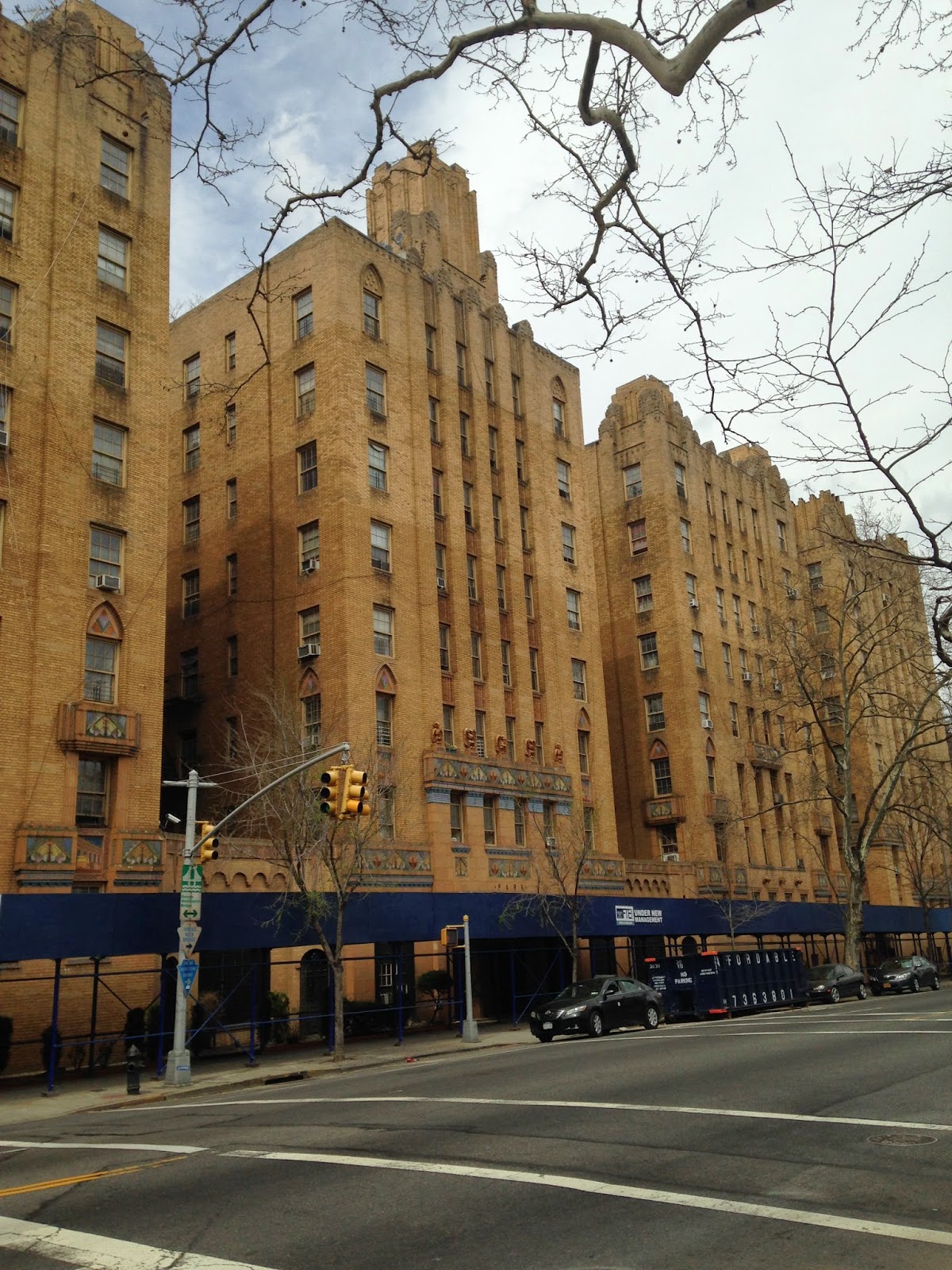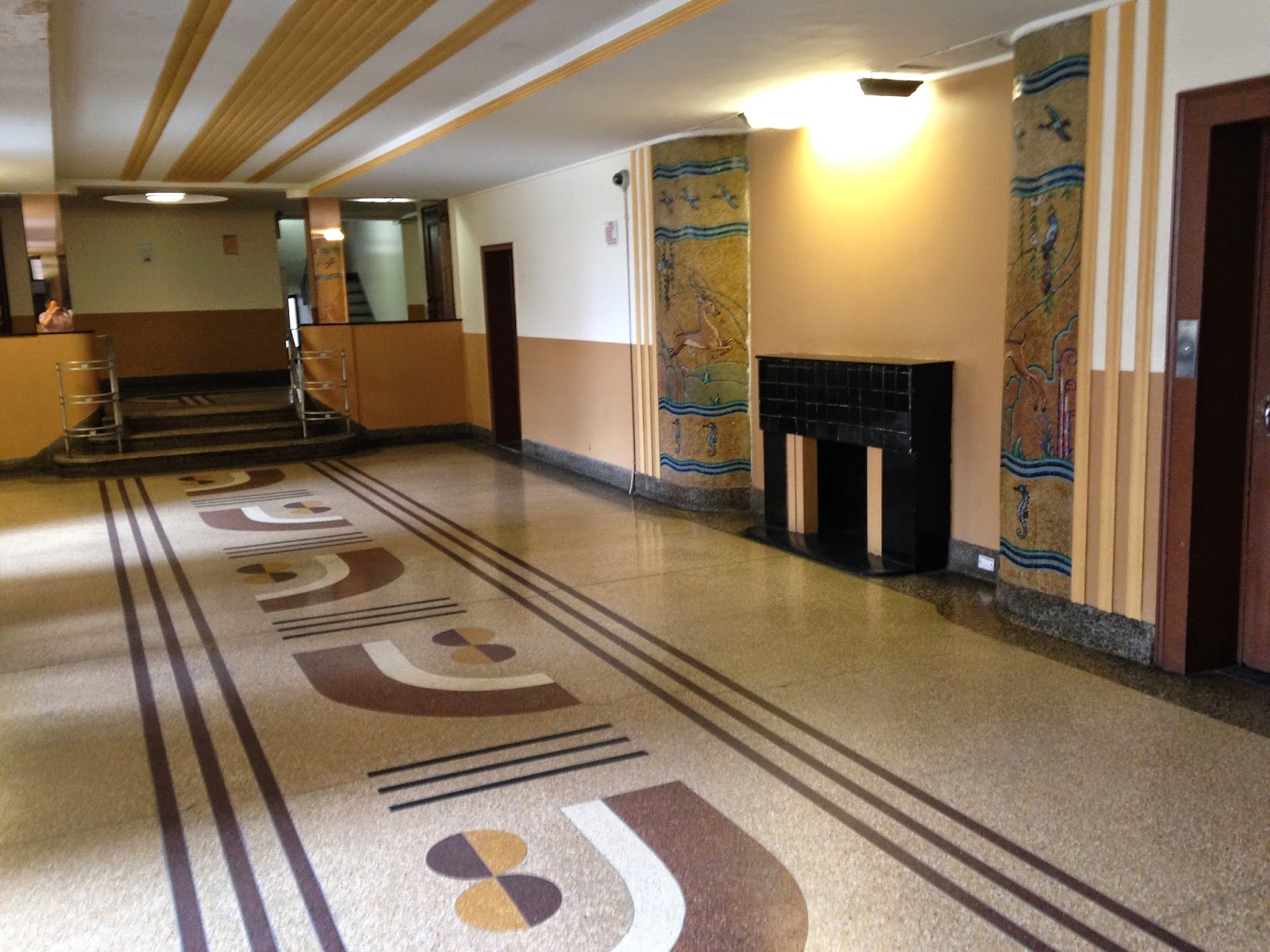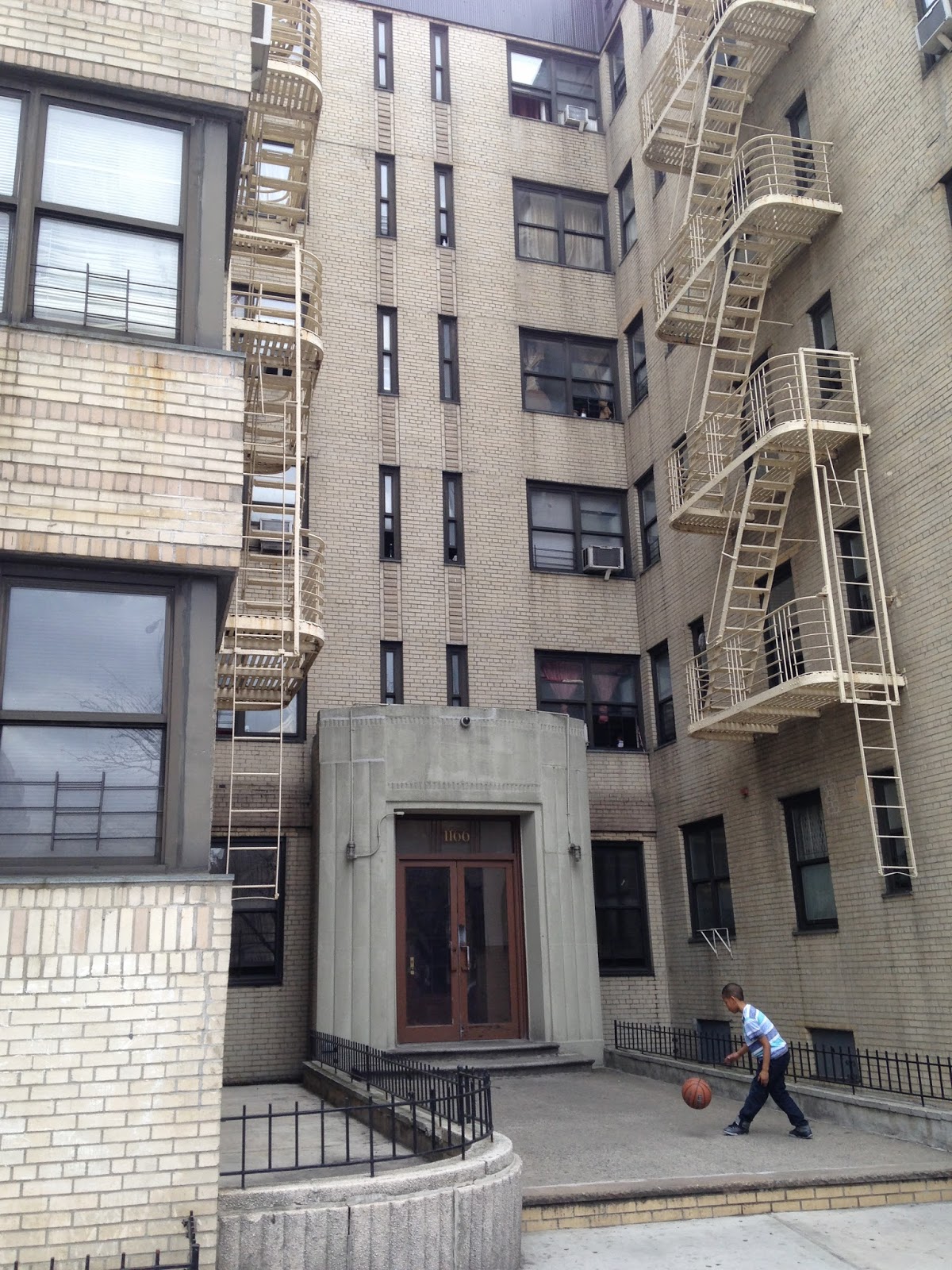The tiny co-op complex at 2501 Palisade Avenue was the vision of John J. McKelvey, a lawyer, writer and developer. Earlier, around 1924, he built the Villa Rosa Bonheur at 2395 Palisade Ave.
At the turn of the century, any building named after Rosa Bonheur, a radical French painter of the 19th century, or Charlotte Brontë, the author of “Jane Eyre,” would have been unusual. Two of Mr. McKelvey’s children — Louise McKelvey Holsapple of North White Plains and John J. McKelvey, of Ridgefield Springs, N.Y. — recall that their father had a literary bent, and Mrs. Holsapple said that he particularly appreciated the work of the Brontës.
Christopher Gray (NYT) described as: The two buildings are like a fantasy sand castle for the Amalfi coast designed by M. C. Escher. The exterior is artfully roughened stucco, with irregular brick, odd stones and bulbous roof tile in a tangle of orange, green, blue and red, as if by Antonio Gaudí. Each apartment has at least three exposures through steel casement windows, with a private entrance and a wood-burning fireplace. The Hudson River views range from sliver to sumptuous. The complex is surrounded by a network of walkways threaded through lush planted areas.
 |
| M.C. Escher |
 |
| Henry Hudson Bridge in background |


















































